| |||||
| Decades: | |||||
|---|---|---|---|---|---|
| See also: | Other events of 1693 History of China • Timeline • Years | ||||
Events from the year 1693 in China .
| |||||
| Decades: | |||||
|---|---|---|---|---|---|
| See also: | Other events of 1693 History of China • Timeline • Years | ||||
Events from the year 1693 in China .
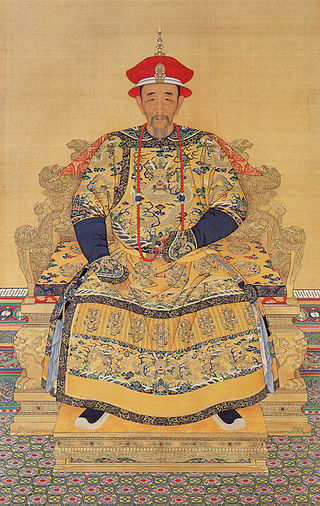
The Kangxi Emperor, also known by his temple name Emperor Shengzu of Qing, personal name Xuanye, was the third emperor of the Qing dynasty, and the second Qing emperor to rule over China proper, reigning from 1661 to 1722.

The Shunzhi Emperor was the second emperor of the Qing dynasty of China, and the first Qing emperor to rule over China proper, reigning from 1644 to 1661. A committee of Manchu princes chose him to succeed his father, Hong Taiji (1592–1643), in September 1643, when he was five years old. The princes also appointed two co-regents: Dorgon (1612–1650), the 14th son of the Qing dynasty's founder Nurhaci (1559–1626), and Jirgalang (1599–1655), one of Nurhaci's nephews, both of whom were members of the Qing imperial clan.

The Dzungar Khanate, also written as the Zunghar Khanate or Junggar Khanate, was an Inner Asian khanate of Oirat Mongol origin. At its greatest extent, it covered an area from southern Siberia in the north to present-day Kyrgyzstan in the south, and from the Great Wall of China in the east to present-day Kazakhstan in the west. The core of the Dzungar Khanate is today part of northern Xinjiang, also called Dzungaria.
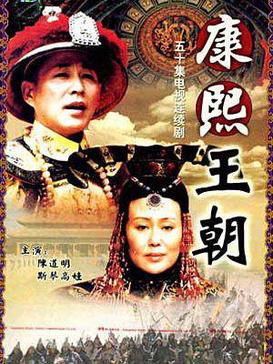
Kangxi Dynasty is a 2001 Chinese television series based on the novel Kangxi Da Di by Eryue He. The series is a prequel to the 1997 television series Yongzheng Dynasty, and was followed by Qianlong Dynasty in 2002.
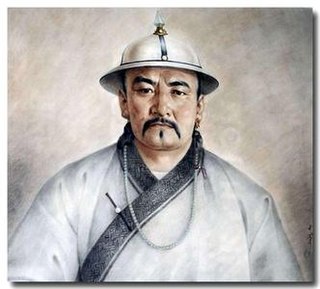
Erdeniin Galdan, known as Galdan Boshugtu Khan was a Choros Dzungar-Oirat khan of the Dzungar Khanate. As fourth son of Erdeni Batur, founder of the Dzungar Khanate, Galdan was a descendant of Esen Taishi, the powerful Oirat Khan of the Northern Yuan dynasty who united all Mongols in the 15th century. Galdan's mother Yum Aga was a daughter of Güshi Khan, the first Khoshut-Oirat King of Tibet.

Öndör Gegeen Zanabazar was the first Jebtsundamba Khutuktu and the first Bogd Gegeen or supreme spiritual authority, of the Gelugpa lineage of Tibetan Buddhism in Mongolia.
Tsewang Rabtan was a Choros (Oirats) prince and the Khong Tayiji of the Dzungar Khanate from 1697 until his death in 1727. He was married to Lha-bzang Khan's sister.

The Northern Yuan was a dynastic regime ruled by the Mongol Borjigin clan based in the Mongolian Plateau. It existed as a rump state after the collapse of the Yuan dynasty in 1368 and lasted until its conquest by the Jurchen-led Later Jin dynasty in 1635. The Northern Yuan dynasty began with the retreat of the Yuan imperial court led by Toghon Temür to the Mongolian steppe. This period featured factional struggles and the often only nominal role of the Great Khan.
Fuquan (Manchu: ᡶᡠᠴᡳᠣᠸᠠᠨ, Möllendorff: fuciowan, Abkai: fuqiuwan, formally known as Prince Yu, was a Manchu prince of the Qing dynasty. He was the second son of the Shunzhi Emperor and a half-brother of the Kangxi Emperor.

The Battle of Jao Modo also known as the Battle of Zuunmod, was fought on June 12, 1696, on the banks of the upper Terelj river 60 kilometres (37 mi) east of the modern-day Mongolian capital Ulaanbaatar. A Dzungar-Mongol army under the command of Galdan Boshugtu Khan was defeated by Qing armies personally led by the Kangxi Emperor. This decisive Qing victory in the early stages of the Dzungar–Qing Wars (1687–1758) effectively incorporated Khalkha Mongolia under Qing rule and relegated Dzungar Mongol forces to Inner Asia until they were finally defeated in 1758.

The Dzungar–Qing Wars were a decades-long series of conflicts that pitted the Dzungar Khanate against the Qing dynasty and its Mongol vassals. Fighting took place over a wide swath of Inner Asia, from present-day central and eastern Mongolia to Tibet, Qinghai, and Xinjiang regions of present-day China. Qing victories ultimately led to the incorporation of Outer Mongolia, Tibet and Xinjiang into the Qing Empire that was to last until the fall of the dynasty in 1911–1912, and the genocide of much of the Dzungar population in the conquered areas.
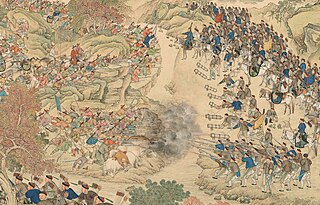
The Revolt of the Altishahr Khojas was an uprising against the Qing dynasty of China, which broke out in 1757 during the reign of the Qianlong Emperor. The rebels were led by Khwāja-i Jahān, leader of the White Mountain Sufis. Qing era documents refer to the event as the "Pacification of the Muslim regions". Hojijan and his brother, Burhān al-Dīn, both held the Muslim title Khoja.
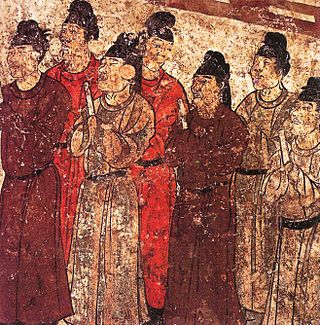
A eunuch is a castrated man. Castration has had a social function in history. In China, castration included the removal of the penis and the testicles (emasculation). A knife removed both organs at the same time. Eunuchs have existed in China since about 146 AD, during the reign of Emperor Huan of Han and were common as civil servants by the Qing dynasty. From ancient times to the Sui dynasty, castration was a traditional punishment and a means of gaining employment in the imperial service. Some eunuchs, such as the Ming dynasty official Zheng He, gained power that superseded that of the Grand Secretaries. Self-castration was not uncommon, although it was not always performed thoroughly and was later banned.
Events from the year 1662 in China.
Events from the year 1694 in China.
Events from the year 1690 in China.